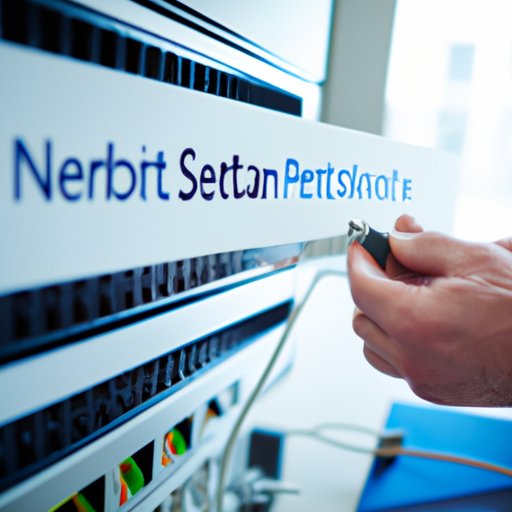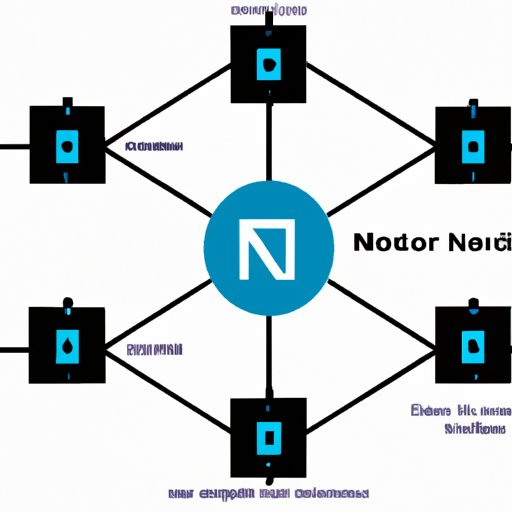Introduction
Cryptocurrencies are becoming increasingly popular, and with that comes the need for reliable and secure infrastructure to support them. A crypto node is a computer connected to a distributed ledger or blockchain network that helps to verify and validate transactions. Running a node is a great way to help secure the network and to ensure its integrity. In this article, we’ll provide an overview of what a crypto node is, what the benefits are of running one, and also provide a step-by-step guide on how to get and set up a crypto node.

Definition of a Crypto Node
A crypto node is a computer system connected to a distributed ledger or blockchain network. Nodes form the backbone of a blockchain network, as they are responsible for validating and verifying transactions, as well as propagating them across the network. They are also used to store copies of the blockchain, and they can be used to mine new blocks. Essentially, a node is the foundation of any blockchain network, and it is essential for the network’s functionality.

Benefits of Running a Crypto Node
There are several benefits to running a crypto node, such as helping to secure the network, as well as providing users with access to additional features. By running a node, users are able to participate in consensus mechanisms, which can help to secure the network. Additionally, nodes can provide users with access to advanced features such as voting and staking. Finally, running a node can also help to increase the decentralization of the network, which is beneficial for ensuring the long-term health of the network.
Research the Different Types of Crypto Nodes and Their Features
Before you can choose a crypto node, you must first do some research to identify your needs and to compare the features of different nodes. There are several types of nodes available, including full nodes, light nodes, and supernodes. Each type of node has its own set of features and capabilities, so it is important to understand the differences between them before making a decision.
Identifying Your Needs
The first step in researching the different types of crypto nodes is to identify your needs. This will help you narrow down your choices and determine which type of node is best suited for your particular use case. Consider factors such as cost, scalability, security, and other features when making your decision.
Comparing Features of Different Nodes
Once you have identified your needs, you can begin comparing the features of different nodes. Look at features such as speed, storage capacity, security protocols, and other features that may be important to you. You should also consider the cost of running a node, as this can vary greatly depending on the type of node you choose.

Choose a Node That Best Suits Your Needs and Budget
Once you have identified your needs and compared the features of different nodes, you can then make an informed decision about which type of node best suits your needs. Consider factors such as cost, scalability, security, and other features when making your choice. You should also consider the reputation of the node provider, as this can affect the overall security of the network.
Considerations for Cost
Cost is an important factor to consider when choosing a node. The cost of running a node can vary greatly depending on the type of node you choose. Full nodes require more computing power and storage than light nodes, so they tend to be more expensive. Additionally, some nodes require additional hardware, such as servers or specialized equipment, which can add to the overall cost.
Making Your Choice
Once you have identified your needs and compared the features of different nodes, you can then make an informed decision about which type of node best suits your needs. Consider factors such as cost, scalability, security, and other features when making your choice. You should also consider the reputation of the node provider, as this can affect the overall security of the network.
Set Up a Secure Environment for Running Your Node
Once you have chosen the appropriate node for your needs, the next step is to create a secure environment for running it. This includes setting up a secure network environment, securing private keys and other sensitive information, and other security measures. It is important to take steps to protect your node from malicious actors, as a compromised node can lead to losses.

Creating a Secure Network Environment
The first step in creating a secure network environment is to ensure that your node is properly configured and secured. This includes configuring firewalls and other security measures, as well as ensuring that all software is up to date. Additionally, you should also consider using a Virtual Private Server (VPS) to host your node, as this can provide additional protection from malicious actors.
Securing Private Keys and Other Sensitive Information
It is also important to secure private keys and other sensitive information associated with your node. This includes encrypting data, using strong passwords, and taking other measures to ensure that your data is safe. Additionally, you should consider using a hardware wallet to store private keys, as this provides an extra layer of security.
Download and Install the Appropriate Software for Your Chosen Node
Once you have created a secure environment for running your node, the next step is to download and install the appropriate software. Depending on the type of node you choose, there may be different software available. You should always check the official website of the node provider for the most up-to-date software.
Finding the Appropriate Software
The first step in downloading and installing the appropriate software is to find the correct software for your chosen node. You should always check the official website of the node provider for the most up-to-date software. Additionally, you should also look for reviews and feedback from other users to ensure that the software is reliable and secure.
Installing the Software
Once you have found the appropriate software, the next step is to install it. This process will vary depending on the type of node and the software being used. However, the general steps involved include downloading the software, configuring it, and ensuring that all dependencies are installed correctly. If necessary, you should also consult the documentation provided by the node provider for further instructions.
Connect to the Network and Start Syncing
Once you have downloaded and installed the software, the next step is to connect to the network and start syncing. This involves connecting to the network and downloading the entire blockchain. Depending on the size of the blockchain, this process can take anywhere from a few minutes to several hours. Additionally, you should also monitor the performance of your node to ensure that it is operating optimally.
Conclusion
Setting up a crypto node can be a daunting task, but with the right knowledge and guidance, it can be done relatively easily. In this article, we provided an overview of what a crypto node is, the benefits of running one, and a step-by-step guide on how to get and set up a crypto node. We covered topics such as researching different types of nodes, setting up a secure environment, downloading and installing the appropriate software, connecting to the network, and starting the synchronization process. By following these steps, you can have a fully functioning crypto node in no time.
Summary of Steps
To summarize, the steps for setting up a crypto node are as follows: research the different types of nodes and their features; choose a node that best suits your needs and budget; set up a secure environment for running your node; download and install the appropriate software; connect to the network and start syncing.
Future Considerations
When setting up a crypto node, it is important to keep in mind that the network is constantly evolving. As such, you should continue to monitor performance, keep the software up to date, and take other measures to ensure that your node is secure and reliable. Additionally, you should also be prepared to upgrade your hardware and software if necessary.
(Note: Is this article not meeting your expectations? Do you have knowledge or insights to share? Unlock new opportunities and expand your reach by joining our authors team. Click Registration to join us and share your expertise with our readers.)
